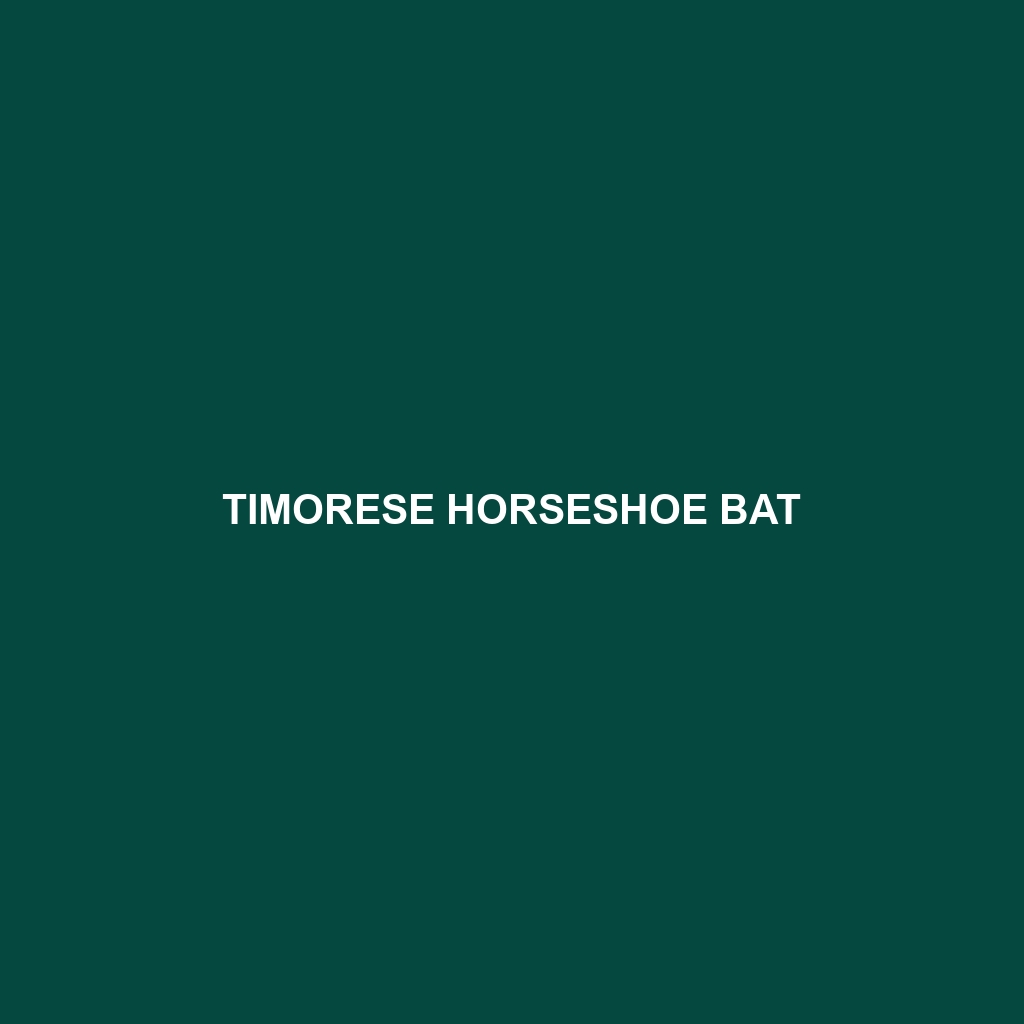Formosan Horseshoe Bat
Common Name: Formosan Horseshoe Bat
Scientific Name: Rhinolophus formosanus
Habitat
The Formosan Horseshoe Bat primarily inhabits subtropical and tropical regions of East Asia, particularly in Taiwan. These bats thrive in forested areas, caves, and agricultural zones, where they find ample roosting sites and abundant food sources. Their preferred habitats include limestone caves and dense woodland which provide shelter and access to insect-rich environments.
Physical Characteristics
The Formosan Horseshoe Bat is a medium-sized bat, typically measuring between 6 to 8 centimeters in body length, with a wingspan that can reach up to 30 centimeters. They are characterized by their distinctive horseshoe-shaped noseleaf, which plays a crucial role in echolocation. Their fur color ranges from a reddish-brown to grayish-brown, making them blend well with their natural surroundings. Notable features include their large ears, which aid in their acute hearing abilities and their relatively broad, rounded wings that enhance their flight agility.
Behavior
Formosan Horseshoe Bats are nocturnal creatures, engaging in a variety of social behaviors. They are known for their echolocation capabilities, which they utilize to navigate and hunt for food during the night. These bats are often seen roosting in colonies, and their social structure typically includes adult females, males, and juvenile bats. Their flight patterns are characterized by a fluttering style, enabling them to maneuver adeptly while foraging for insects.
Diet
The diet of the Formosan Horseshoe Bat primarily consists of various insects, including moths, beetles, and flies. They are skilled foragers, often employing echolocation to locate prey in their environment. This dietary specialization plays an essential role in controlling insect populations, thus making these bats vital to ecological balance.
Reproduction
The reproduction of Formosan Horseshoe Bats typically occurs during the warmer months, with breeding season peaking in late spring. Female bats give birth to a single pup, which they nurse until it is capable of flying and foraging independently. Maternal care is notable, as mothers often roost together with their young, providing warmth and protection during the early stages of life.
Conservation Status
The Formosan Horseshoe Bat is currently classified as vulnerable due to habitat loss and human encroachment. Conservation measures are crucial to protect their habitat and ensure the survival of this unique bat species.
Interesting Facts
One fascinating aspect of the Formosan Horseshoe Bat is its ability to generate complex vocalizations for social communication. Additionally, they have been observed participating in cooperative behaviors while foraging, which is relatively rare among bat species. Their horseshoe-shaped noseleaf is not just a unique physical feature; it also enhances their echolocation accuracy, making them exceptional hunters of nocturnal insects.
Role in Ecosystem
The Formosan Horseshoe Bat plays a vital role in its ecosystem as a natural pest controller. By consuming large quantities of insects, they help maintain the balance within their environment, benefiting agricultural practices and promoting plant health through pest reduction. Their contributions to pollination and seed dispersal further enhance their importance in ecosystem dynamics.
